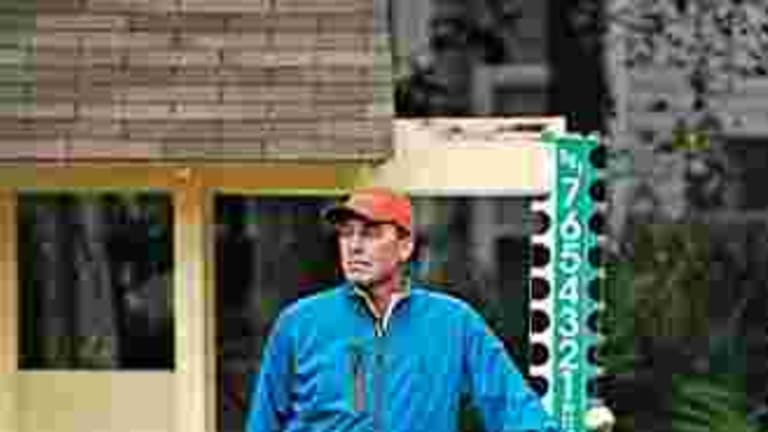“I stand before you today . . . to acknowledge Ivan as a far superior physical specimen than myself, despite a near-13-year age gap.”
These were the words spoken by Jez Green, Andy Murray’s 40-year-old strength and conditioning coach, during a minute-long statement he made at Murray’s press conference prior to the start of the 2013 Australian Open. Green was reading from a statement that had been prepared for him by Ivan Lendl, the eight-time Grand Slam singles champion who started coaching Murray at the start of last season.
“We bought a new piece of training equipment, a VersaClimber, about the time of the US Open and Jez made a bet with Lendl that he would never be able to match him on it,” Murray explained in a column he wrote for The Australian. “This is a tough machine that makes you feel like you are climbing up a mountain. Try to imagine this: Basically, you have your arms outstretched above you and your feet locked in at the bottom, and then you start climbing. Adjust it one way and it kills your quadriceps, the other way your arms are aching. Before the challenge, they were going back and forth at each other. The loser, Jez, had to read out a piece written for him by Ivan. Funny stuff, though it will be a while before any of us, and particularly Jez, challenge Ivan.”
After 16 years of professional tennis, and another 17 years away from the pro game until he teamed up with Murray at the start of last season, Lendl remains a fitness fiend. The man who introduced healthy eating habits, cardio workouts and strength training to a tennis generation that thrived on Haagen Dazs (John McEnroe) and Mountain Dew (Andre Agassi) is not only still impressively fit himself, but he has spent the last 16 months sharing his wisdom with the 26-year-old Murray. He used to run for miles, but once his hips began to hurt, he took to biking hundreds of miles a week. One of the things that attracted Lendl to Murray, and helped ease the transition into being his coach, was the fact that Murray is passionate about his own fitness regimen. He has whipped his body into fighting shape through a series of sprint drills that have also given him the stamina of a middle-distance runner. Murray also does weight-room work, including chin-ups with a 44-pound weight strapped to his waist, that have added nine pounds of muscle to his otherwise lean 6-foot-3 frame and now allows him to bench-press like a rugby player.
“What Ivan brought to Andy was structure without being strict,” says Darren Cahill, an ESPN commentator and former touring pro from Australia who has helped advise Murray through their mutual association with Adidas, one of Murray’s sponsors. “He’s forthright, but you can debate with him. He’s brought at least a dozen little things to Andy’s game, things like helping him develop an offensive down-the-line forehand, because Ivan knows that everyone else is so fit today that they have no problem hitting heavy cross-court forehands all day long.”
Lendl’s own transformation from tennis player to athlete came at a most unlikely time in his career. After losing four consecutive Grand Slam finals—to Bjorn Borg at the 1981 French Open, to Jimmy Connors at the 1982 and ’83 US Opens and to Mats Wilander at the ’83 Australian Open—Lendl fought his way back from two sets down to upset top-seeded John McEnroe, 3-6, 2-6, 6-4, 7-5, 7-5, in the final of the 1984 French Open.
“After I beat John, I didn’t feel very well at all,” says Lendl who, like his Czech compatriot Martina Navratilova on the women’s side, is now widely credited with introducing off-court training as a means of gaining an edge over his opponents. “I was feeling tired and there was a suspicion of mono[nucleosis] that turned out not to be true. It turned out to be nutritional. That’s why I started watching my nutrition and it allowed me to train harder. Before that, I would think nothing of drinking a two-liter bottle of soda with dinner or sitting down and eating three servings of raspberries, which have a lot of natural sugar. Once it was explained to me and I started having proper nutrition, all of a sudden things started getting better for me.”
